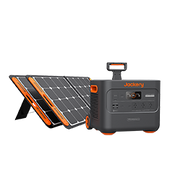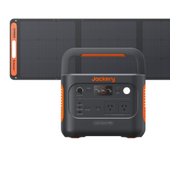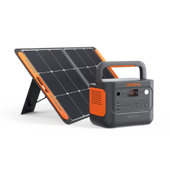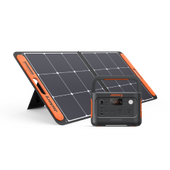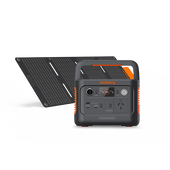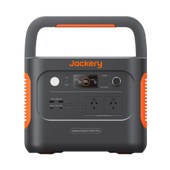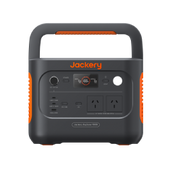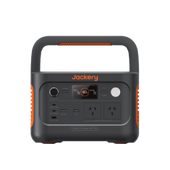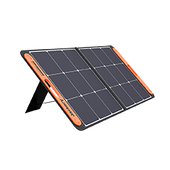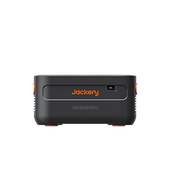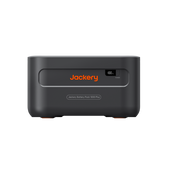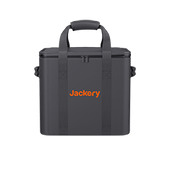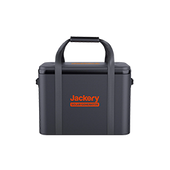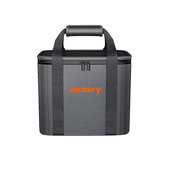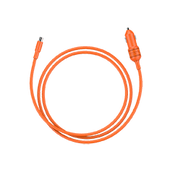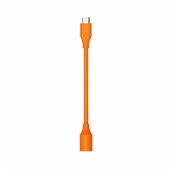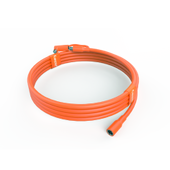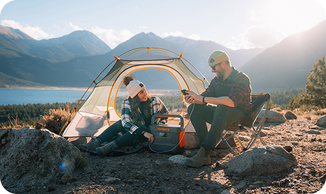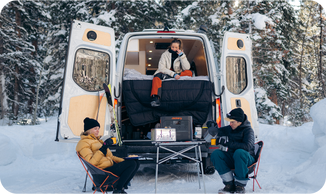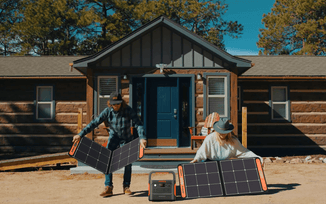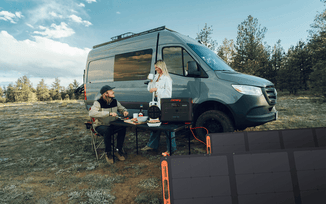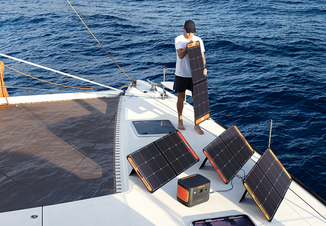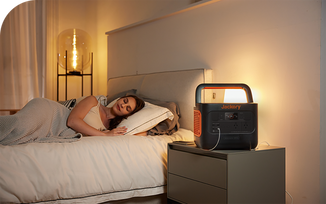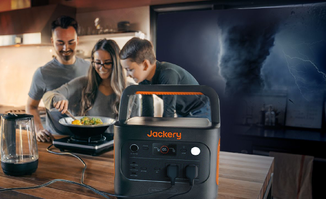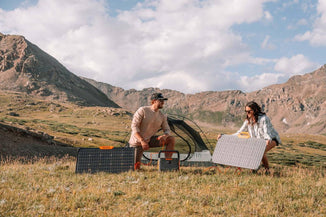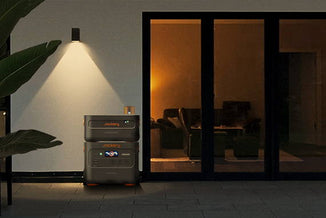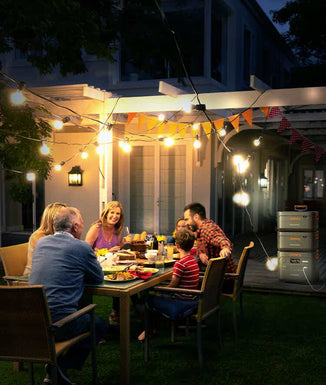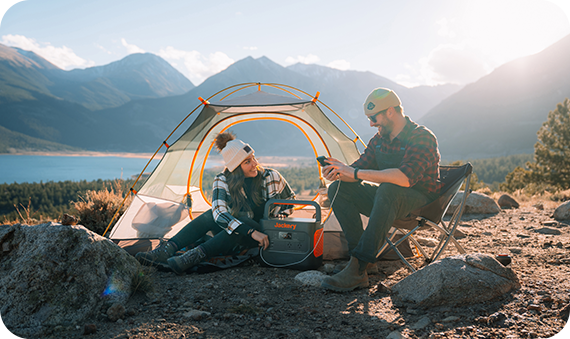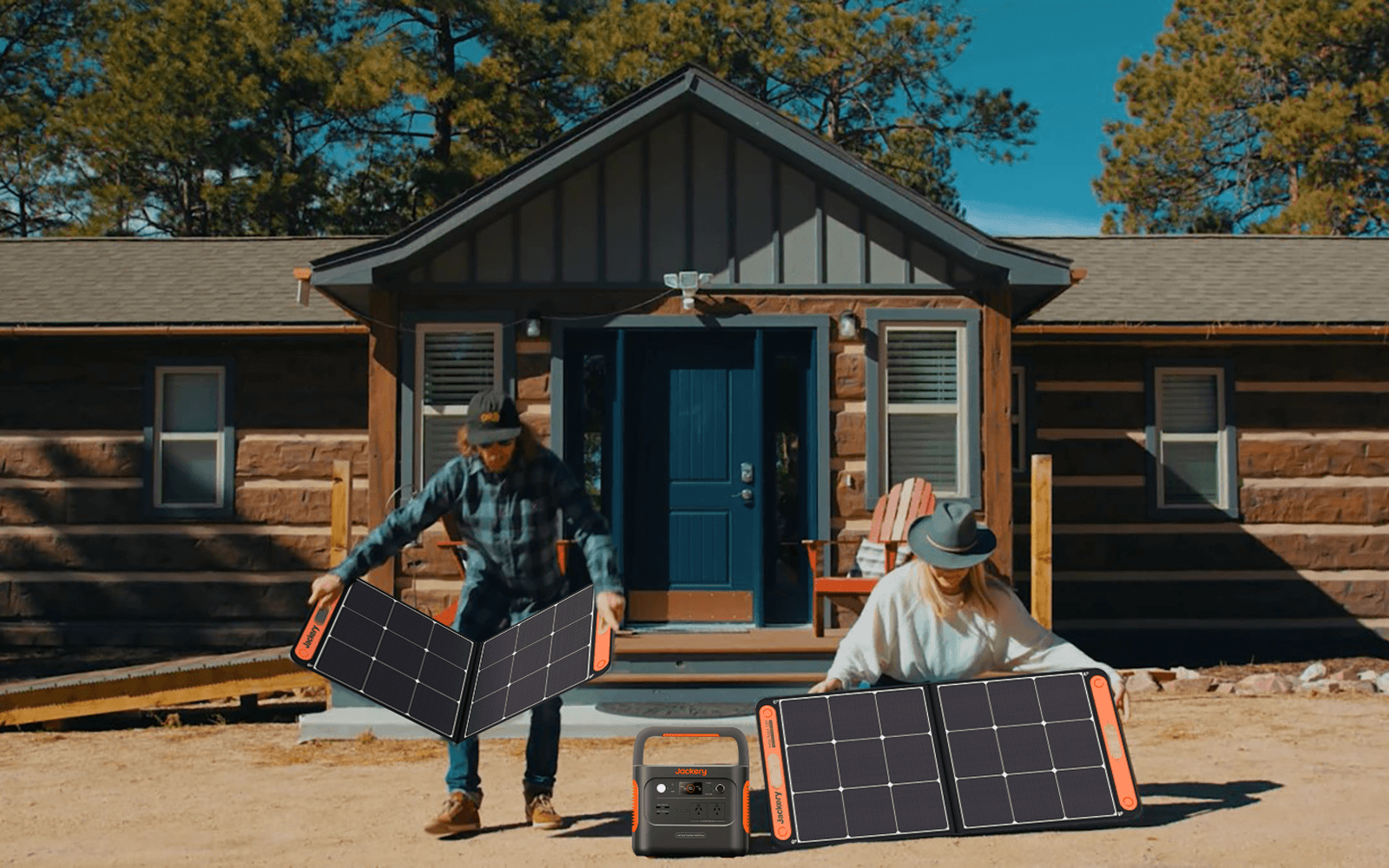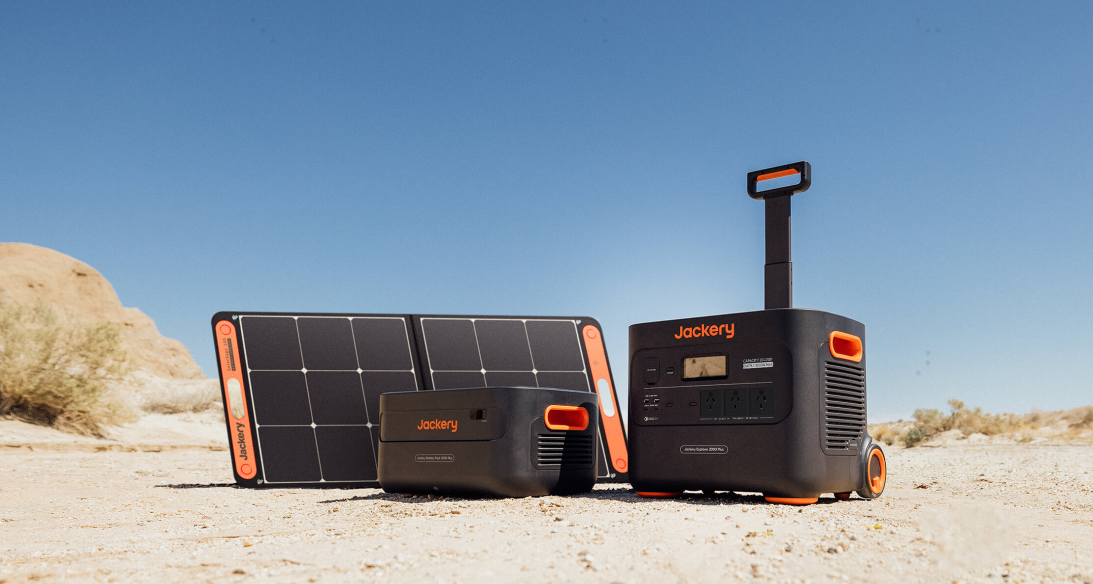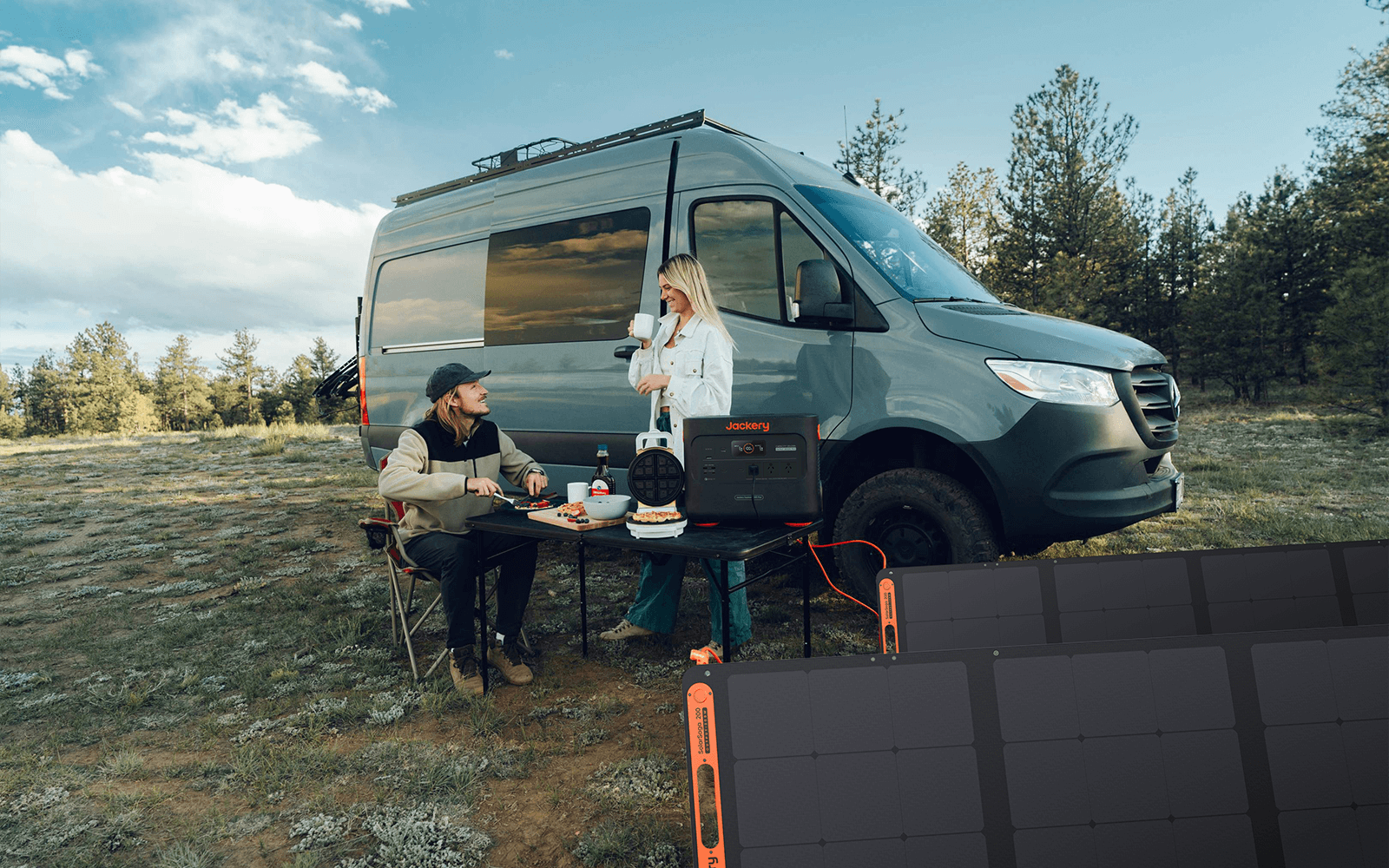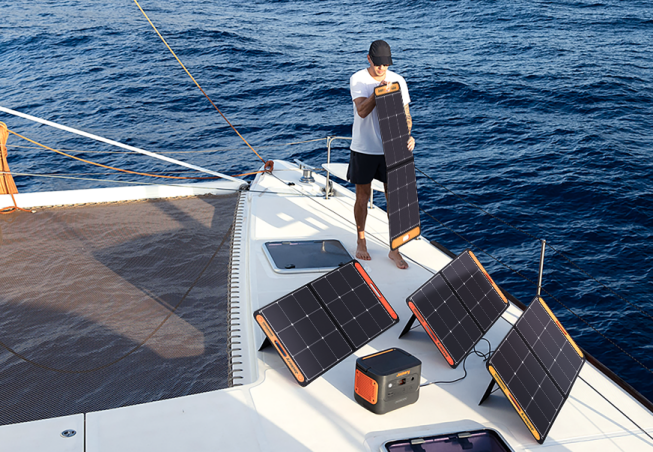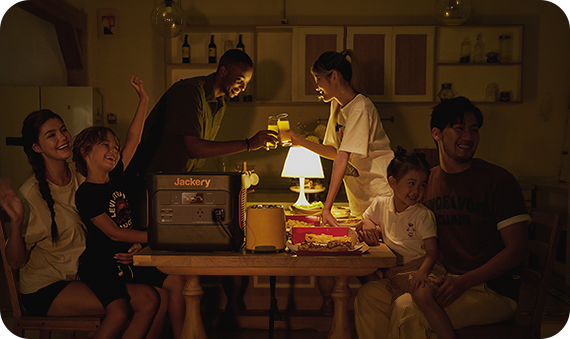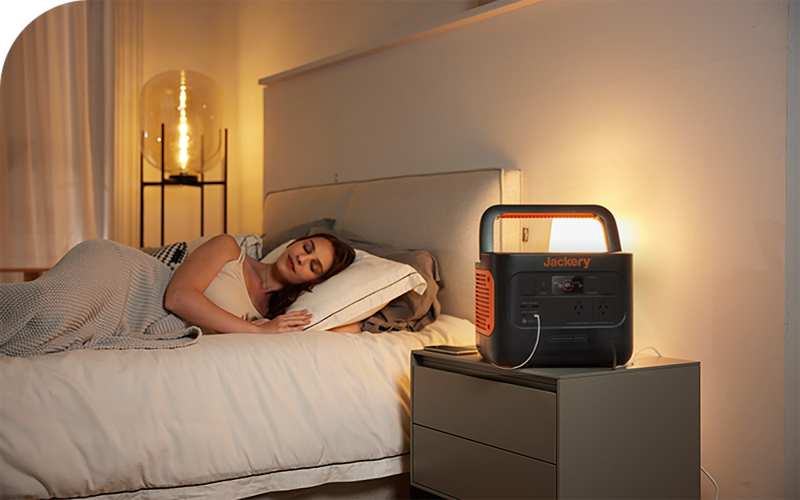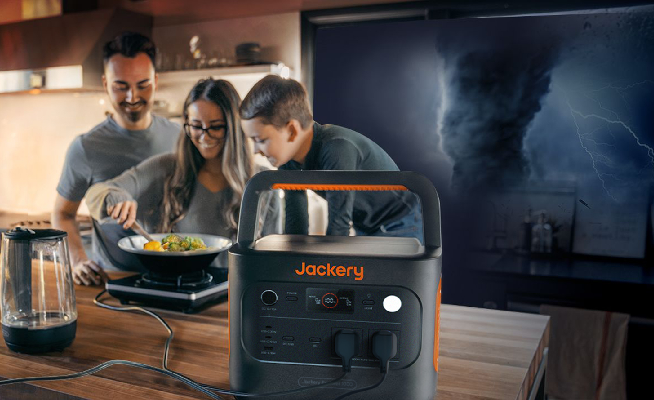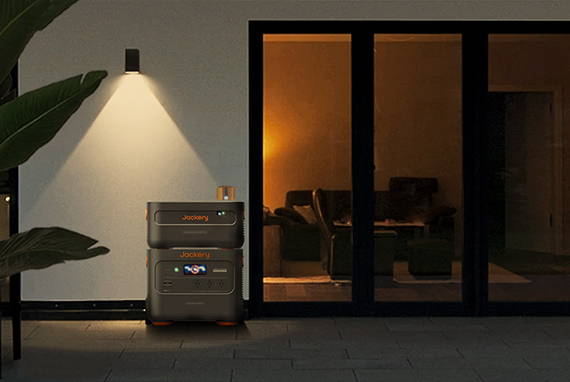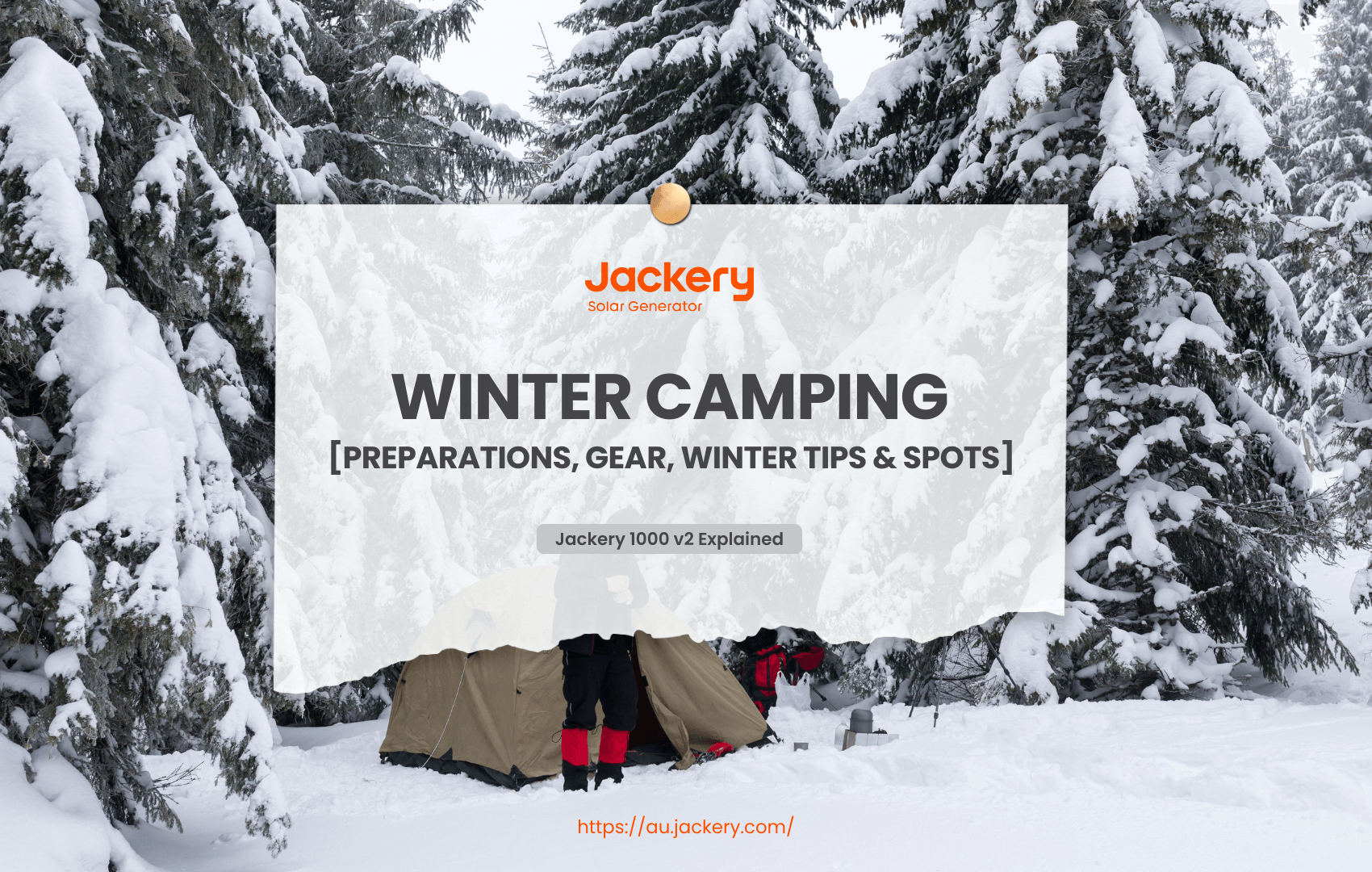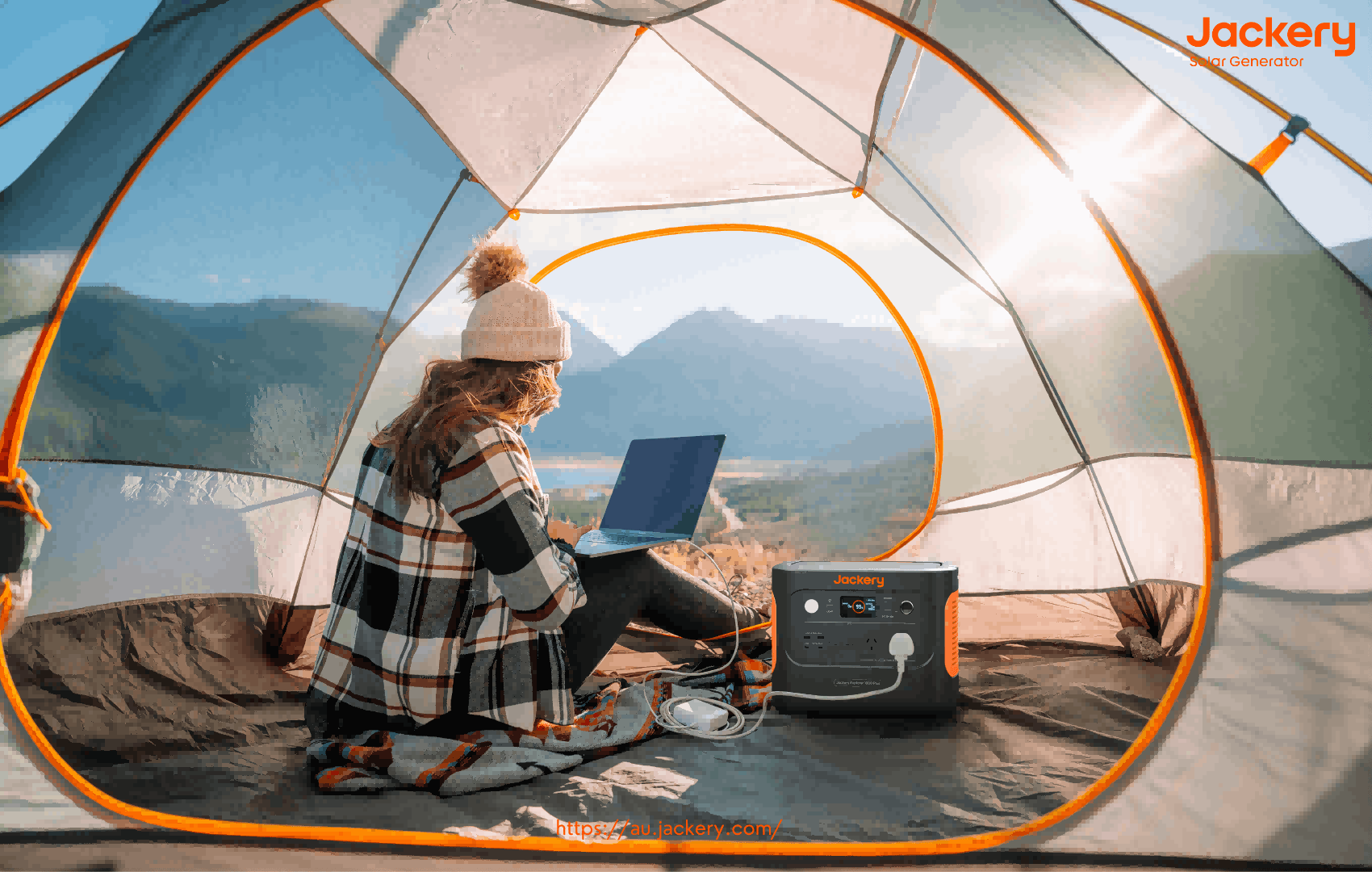|
Key Takeaways: |
|
- Camping without a refrigerator is perfectly achievable with the proper combination of shelf-stable, canned, and dry items. - Dry grains, oats, flatbreads, and wraps offer long-lasting energy for active outdoor days. - Smart snack options such as trail mix, energy bars, and dried fruit help maintain energy levels between meals. - Effective meal planning for non-fridge camping includes rotating ingredients, portion prepping, and choosing foods that match your trip length. - Proper food storage using sealed containers, dry bags, and shade management helps maintain food freshness and safety in the Australian outdoors. - We recommend the Jackery Solar Generator 600 Plus or 1000 v2 to power your camping fridges, portable coolers, ice makers, or even portable stoves. |
What Food to Take Camping Without Fridge?
In Australia, going camping provides a special chance to be in touch with nature. However, the lack of refrigeration makes preparing meals and storing food difficult. You may have wholesome and filling meals all throughout your journey if you prepare ahead and choose non-perishable foods carefully.
When camping without refrigeration, selecting foods that can be stored for an extended period of time and are resistant to going bad is essential. Not only do these products guarantee food safety, but they also supply the energy required for activities that take place outside.

Proteins:
Canned Meats and Fish: Options like tuna, chicken, and braised steak are shelf-stable and versatile for various meals, such as sandwiches, salads, or mixed with rice.
Dried Meats: Beef jerky and salami provide protein-rich snacks that require no refrigeration, making them ideal for on-the-go energy boosts.
Tinned Legumes: Chickpeas, lentils, and kidney beans are excellent for salads and stews, offering both protein and fibre.
Carbohydrates:
Grains and Pasta: Rice, quinoa, spaghetti, and noodles are lightweight, easy to cook, and serve as the foundation for numerous meals.
Bread Alternatives: Flatbreads and crispbreads like Ryvita and Salada have longer shelf lives than regular bread and can be paired with various spreads or toppings.
Dairy and Alternatives:
UHT and Powdered Milk: Long-life milk options are convenient for tea, coffee, and cooking, eliminating the need for refrigeration.
Hard Cheeses: Varieties like aged cheddar can last several days without refrigeration, especially when kept in a cool, shaded area.
Fruits and Vegetables:
Hardy Vegetables: Carrots, potatoes, onions, and beetroot can withstand several days without cooling and are versatile for various dishes.
Canned and Dehydrated Product: Corn, peas, and other vegetables are great additions to meals, providing essential nutrients and variety.
Snacks and Others:
Trail Mix and Nuts: These provide energy and are easy to pack, making them perfect for hikes and quick snacks.
Nut Butter and Spreads: Peanut butter and similar spreads are versatile for snacks and meals, pairing well with bread or crackers.
Meal Planning For Non-Fridge Camping
Meal planning is essential to make sure your camping trip is hassle-free and pleasurable. The problem while camping without a refrigerator is to prepare meals that are wholesome, filling, and simple to make while maintaining food safety and freshness.
When it comes to developing a meal plan that functions well without refrigeration, a little strategic planning can make all the difference. Fresh and tasty meals can be enjoyed in the great outdoors if you make a variety of adaptable dishes, pack them with care, and choose the correct foods.

Meal Planning Strategies
Through the implementation of the following ideas, you will be able to make the most of your refrigerator-free camping vacation and enhance your camping experience by assuring variety, nutrition, and convenience from your meals.
Plan Ahead: Create a meal plan that begins with using perishable goods and then transitions to using non-perishable items later on in the trip. This will ensure that the food is fresh and will reduce the amount of food that is wasted.
Pre-Preparation: You may simplify the process of cooking at the campsite by preparing and portioning meals at home, which will save you both time and effort.
Storage Solutions: To maintain the food's freshness for a more extended period of time and to prevent it from pests, store it in airtight containers and shaded regions.
Cooking Equipment: You should bring important cooking items such as a portable stove, lightweight pots, and utensils to make the meal preparation process easier.
Hydration: The importance of maintaining proper hydration on camping trips cannot be overstated. Make sure that you have access to clean drinking water, and if required, think about carrying water purifying devices with you.
No-Fridge Breakfast Staples for Camping
When it comes to providing fuel for your activities outside, breakfast is an essential meal. With just a little bit of preparation, you can enjoy a wide choice of delicious breakfast options that do not require a refrigerator:
Muesli and Granola: Combine with UHT milk or powdered milk for a nutritious and filling start to the day.
Instant Porridge Packs: These are easy to prepare and come in a variety of flavours.
Pancake Mix in a Bottle: Pre-mixed bottles allow you to make pancakes by simply adding water.
Peanut Butter and Spreads: Peanut butter offers protein and energy, perfect for pairing with wraps or crackers.
Breakfast Bars: Packed with oats, dried fruits, and seeds, these bars are ideal for quick mornings.
Tinned Fruit with Long-Life Cream: A sweet and refreshing breakfast, perfect for a change of pace.
Easy No-Fridge Lunch Ideas for Camping
During a camping trip, lunch should be easy to prepare, simple, and satisfying to eat to satisfy your hunger. Listed below are some excellent choices for a lunch that does not require refrigeration:
Wraps with Shelf-Stable Fillings: Use flatbreads or tortillas with spreads like peanut butter, canned tuna, or hummus. Add long-lasting veggies like carrots or cabbage for crunch.
Canned Chicken or Bean Salads: Combine canned protein with instant rice and seasonings for a fresh, easy lunch.
Crackers with Toppings: Pair crackers with hard cheese, salami, or nut butter for a satisfying meal.
Cold Pasta Salad: Prepare pasta in the morning and mix it with jarred olives, sundried tomatoes, and olive oil for a cool, refreshing salad.
DIY Ploughman's Plate: Cured meats, hard cheeses, pickles, and crackers create a no-cook, hearty lunch option.
No-Fridge Dinners
A hearty supper that is warm and comforting can be enjoyed around the campfire at the conclusion of a hard day of adventuring. The following are some suggestions for dinners that do not require refrigeration:
One-Pot Lentil or Bean Curry: Use canned lentils or chickpeas with curry paste and coconut milk. Serve over instant rice.
Campfire Nachos: Layer corn chips, canned beans, and salsa in foil, then heat over the fire for a tasty treat.
Foil Pack Veggie Bake: Slice up potatoes, sweet potatoes, and carrots, season, and cook in foil over the coals.
Pasta with Jarred Sauce: Cook pasta and add a jar of pasta sauce topped with canned tuna or olives.
Couscous with Canned Stew: Couscous is quick to cook and can be paired with canned beef stew or beans for a hearty meal.
Damper Bread with Toppings: Make classic Aussie damper over the fire and serve with jams, honey, or Vegemite.
Tips To Keep Your Non-Refrigerated Food Fresh
Keeping non-refrigerated food fresh is essential when camping in Australia's varied climates. Proper storage methods become crucial to preventing spoiling and guaranteeing food safety when refrigeration is not available. You may eat healthily on your outdoor journey by practising good tactics.

Tip 1: Store Food in Cool, Shaded Areas
Food deterioration is accelerated by heat and sunshine exposure. Store your food at your campground in cool, sheltered areas to keep it fresher longer. Use the shade that comes from trees, or make your own shade using tents or tarps. Food that is kept out of direct sunlight is less likely to spoil since it maintains cooler temperatures.
Tip 2: Use Airtight Containers
Keeping food in airtight containers is essential to maintaining its quality. They reduce air exposure, which can cause oxidation and spoiling, discourage pests, and stop moisture intrusion. Store foods like grains, nuts, and dried fruits in airtight containers to increase the shelf life of foods while travelling.
Tip 3: Pre-portion and Vacuum Seal Meals
Meal preparation and quantity control prior to your vacation can improve convenience and cut down on waste. By eliminating air, vacuum sealing these sections slows down the deterioration process and provides protection from moisture and impurities. This technique works very well for products like meats, cheeses, and prepared meals.
Tip 4: Monitor Food Safety Practices
It's critical to practice good hygiene when handling food outside. Always use clean utensils and wash your hands before preparing meals. Avoid cross-contamination at all costs, particularly while handling both raw and cooked meals. Foodborne infections can be avoided during your camping trip by following proper food-handling procedures.
Food Safety Tips for Camping Without Refrigeration
Camping in Australia's varied landscapes has distinct difficulties, particularly when it comes to food safety in the absence of refrigeration. To fully enjoy your outdoor vacation, you must make sure your meals are safe to eat. Following safe food handling and storage procedures may increase your camping experience and reduce your chance of contracting a foodborne disease.

Tip 1: Plan Meals Strategically
Food safety on unrefrigerated camping trips is largely dependent on proper meal planning. Eat perishable foods, such as fresh meats, dairy products, and eggs, early in the trip when they are less likely to have gone bad, and switch to non-perishable foods, such as canned goods, dried fruits, and shelf-stable snacks, as the days go by. This will help you avoid eating spoiled food and guarantee a varied diet throughout your trip.
Tip 2: Maintain Proper Hygiene
Keeping things clean is essential when working with food outside. Before handling or eating anything, always wash your hands with soap and water. When water is limited, use hand sanitisers that contain at least 60% alcohol. Before using, make sure all surfaces, cutting boards, and cooking utensils are clean to avoid cross-contamination.
Tip 3: Separate Raw and Cooked Foods
Keep cooked and raw foods apart to avoid cross-contamination. When handling raw meats and prepared foods, use distinct containers and utensils. This procedure reduces the possibility of dangerous bacteria moving from raw to cooked food, which is crucial in situations when refrigeration isn't available to stop the growth of bacteria.
Tip 4: Cook Foods Thoroughly
Food must be cooked to the proper internal temperature to eradicate dangerous bacteria. To make sure meats reach the proper temperatures—75°C for poultry, 63°C for whole cuts, and 71°C for minced meats—use a food thermometer. Foodborne infections, which can be especially annoying when camping, are less likely to occur when food is prepared properly.
Tip 5: Be Cautious with Leftovers
Leftovers can soon become dangerous to consume if they are not refrigerated. Keep leftovers in sealed containers and eat them within a few hours if you must preserve them. Cooked food shouldn't be left out for long, especially during warm weather, as this can encourage the spread of bacteria.
Proper Storage Techniques for Camping Food
Keeping your food safe and fresh when camping is essential, particularly if refrigeration isn't available. Using the proper storage methods helps you avoid contamination and wildlife encounters while maintaining your food's quality. The following practical tips will help you safely preserve your food while camping:
Utilise Airtight Containers
Food that is kept in airtight containers is less likely to spoil since it is shielded from moisture and air. Additionally, these containers reduce odours that can draw wildlife and discourage pests. Choose BPA-free, long-lasting containers that are simple to store and maintain.
Implement Vacuum Sealing
By eliminating air from packing, vacuum sealing prolongs the shelf life of perishable goods. This technique works exceptionally well with meats, cheeses, and prepared foods. Vacuum-sealed packages are small and less likely to leak in your storage space.
Separate Food Categories
To save time and avoid cross-contamination, arrange your food according to categories, such as snacks, dry products, and perishables. Use distinct containers or sections in your storage system to preserve hygienic conditions and order.
Store Food Off the Ground
Raise your food storage to keep animals, moisture, and insects away. When bear-proof lockers, hanging racks, or camp tables are available, use them. Keeping food off the ground also helps keep the campsite tidy.
Label and Date Your Supplies
All food items should be clearly labelled with the contents and the storage date. By ensuring that older commodities are used first and monitoring freshness, this approach helps to reduce waste. For goods that are homemade or repackaged, it is particularly crucial.

If There Is a Camping Fridge, How to Power It?
Camping fridges, especially compressor-based models, require a stable and consistent power supply to function correctly and keep your food and drinks cold. Jackery Solar Generators provide a pure sine wave AC output (on models with AC outlets), which is essential for most refrigerators' efficient and safe operation. This is more reliable than relying on intermittent car charging or potentially unstable campsite power.
Depending on the size and power consumption of your camping fridge and the capacity of the Jackery Portable Power Station, you can run your fridge for a significant amount of time without needing to be connected to mains electricity. This is particularly beneficial for campsites without electrical hookups or for maintaining refrigeration during travel.
Jackery Solar Generators are easy to move to and from your campsite thanks to their robust handles and portable design. This allows you to position your fridge conveniently without being tethered to a power outlet. Pairing your Jackery with Jackery Solar Panels provides a fantastic off-grid charging solution. You can replenish the power station during the day using solar energy, extending your ability to keep your fridge running for longer trips. Models with built-in MPPT (Maximum Power Point Tracking) controllers optimise solar charging efficiency.
Jackery Solar Generator 1000 v2
The "Solar Generator" designation means this product is designed to be paired with solar panels. Using solar energy to recharge the power station decreases your reliance on the grid and has a lower environmental impact. This is particularly appealing for campers who value sustainability. Jackery Solar Generator 1000 v2 is more powerful than 600 Plus with 1070Wh capacity, which combines Jackery Explorer 1000 v2 with SolarSaga 100W or 200W solar panels.

Higher Capacity & Output: The Jackery Explorer 1000 v2 offers a generous 1070Wh capacity, which is typically sufficient to power a camping fridge for a considerable amount of time, especially when combined with solar recharging. With 1500W output (3000W surge), the high output allows you to power your fridge and other essential devices simultaneously, such as lights, fans, and even small appliances.
Efficient and Versatile Recharging: Jackery Solar Generators are designed to work seamlessly with Jackery SolarSaga solar panels. The Explorer 1000 v2 often features an MPPT (Maximum Power Point Tracking) controller, optimising solar charging efficiency. With electrical hookups, you can also recharge the power station from a standard wall outlet before your trip or at a campsite. Recharge using your car's 12V outlet while driving.
Long Fridge Runtime: The exact runtime depends on your fridge's wattage and usage patterns. However, you can expect a Jackery Solar Generator 1000 v2 to power a typical 40-60W camping fridge for a significant portion of your camping trip, especially if you can recharge it with solar during the day.
Multiple Output Ports: Jackery 1000 v2 typically includes AC outlets, USB-A ports, USB-C ports (often with Power Delivery), and a car outlet, allowing you to power a wide range of devices alongside your fridge.
|
Jackery Explorer 1000 v2 Running Time |
|
|
Small Camping Fridge (20W) |
25.1H |
|
Medium Camping Fridge (60W) |
11.7H |
|
Large Camping Fridge (80W) |
9.2H |
|
Small Portable Cooler (50W) |
13.5H |
|
Large Portable Cooler (100W) |
7.6H |
(*The working hours are only for reference; the actual working hours depend on your usage.)
Jackery Solar Generator 600 Plus
Choosing a Jackery Solar Generator 600 Plus to power your camping fridge offers a compelling combination of features and benefits, making it a strong contender for enhancing your off-grid experience. It is the combo of a Jackery Explorer 600 Plus portable power station and SolarSaga 100W solar panel.

Sufficient Capacity for Many Camping Fridges: The Jackery Explorer 600 Plus has a capacity of 632Wh (Watt-hours). This is often enough to power many portable camping fridges for a significant duration, especially for weekend trips. To estimate runtime, you'll need to know the wattage of your fridge.
A typical camping fridge might draw between 40W and 80W while running. For a 60W fridge, this could be around 8-10 hours of continuous operation. Keep in mind that fridges cycle on and off, so the actual runtime will likely be longer.
Portable and Relatively Lightweight: Weighing around 16.1 lbs (7.3 kg), the Explorer 600 Plus is reasonably portable for a power station with this capacity. It's easier to carry and manage compared to larger, heavier models. This is crucial for setting up your campsite and moving the power station if needed.
Multiple Output Ports for Versatility: The Explorer 600 Plus comes equipped with two AC outlets (800W continuous, 1600W peak), which are essential for directly powering most camping fridges that use a standard AC plug. Multiple USB Ports (USB-A and USB-C, including up to 100W PD): Allows you to simultaneously charge your phones, tablets, lights, and other USB-powered devices. Carport (12V): Provides another option for powering or charging compatible devices.
|
Jackery Explorer 600 Plus Running Time |
|
|
Small Camping Fridge (20W) |
17.3H |
|
Medium Camping Fridge (60W) |
7.4H |
|
Large Camping Fridge (80W) |
5.8H |
|
Small Portable Cooler (50W) |
8.6H |
|
Large Portable Cooler (100W) |
4.7H |
(*The working hours are only for reference; the actual working hours depend on your usage.)
FAQs
The following are the frequently asked questions about what food to take camping without a refrigerator.
1. What food doesn't need to be refrigerated for camping?
When camping without refrigeration, choose non-perishable foods such as grains like rice and pasta, dried fruits, nuts, seeds, hard cheeses, canned proteins (like tuna and beans), and shelf-stable milk substitutes. These meals are perfect for outdoor trips because of their long shelf life and ability to tolerate various temperatures.
2. What food can you eat without a refrigerator?
Foods such as canned products, jerky, granola bars, dried fruits, nut butter, and some fresh produce, such as apples and oranges, can be safely eaten without refrigeration. Because they are shelf-stable and don't need to be kept cold, these products are practical in settings without refrigeration.
3. What is the best fresh food to take camping?
Hardy and less perishable fresh vegetables like carrots, cucumbers, bell peppers, apples, and citrus fruits are the best to pack when camping. If stored in a cool, shady location, these products can last several days without refrigeration.
4. What food should you take to a festival without a fridge?
Bring non-perishable snacks such as trail mix, granola bars, canned salmon, hard cheeses, and fresh fruits that don't go bad easily if you're attending a festival without refrigeration. These foods don't need to be prepared, are portable, and can sustain your energy levels during the event.
5. What is a lunch that doesn't need refrigeration?
A wrap with hummus and veggies, a quinoa salad with canned beans, or a peanut butter and jelly sandwich are all possible lunch options that don't need to be refrigerated. These meals don't require cold storage because they are prepared with ingredients that are safe to eat on the shelf.
Final Thoughts
You may experience a world of convenience, independence, and memorable meals outside by learning to camp without a refrigerator. A balanced meal plan, shelf-stable ingredients, and creative storage options will keep you nourished, alert, and safe during your journey.
Camping cuisine can be just as much fun as the adventure itself, from filling dinners prepared over the campfire to easy, wholesome breakfasts and lunches that pack nicely. With this guidance, Australians can comfortably forgo the esky and enjoy the flavours of the outdoors, one meal at a time, whether they are camping alone or with family.

